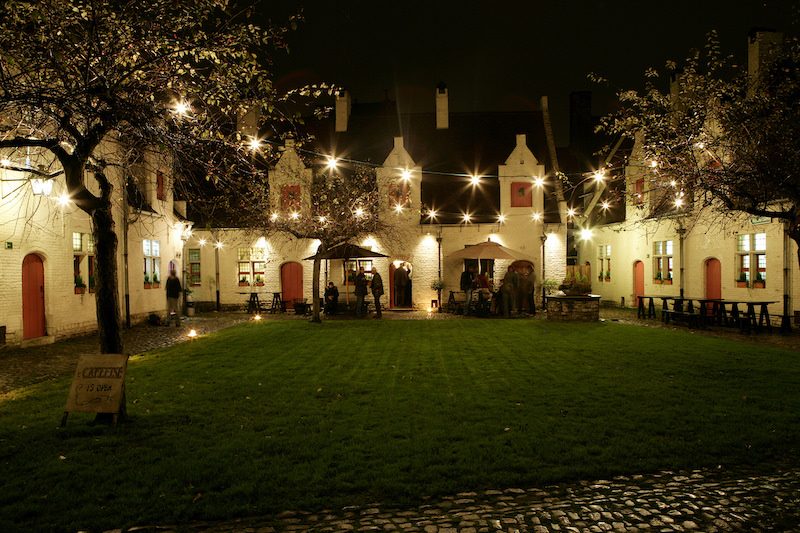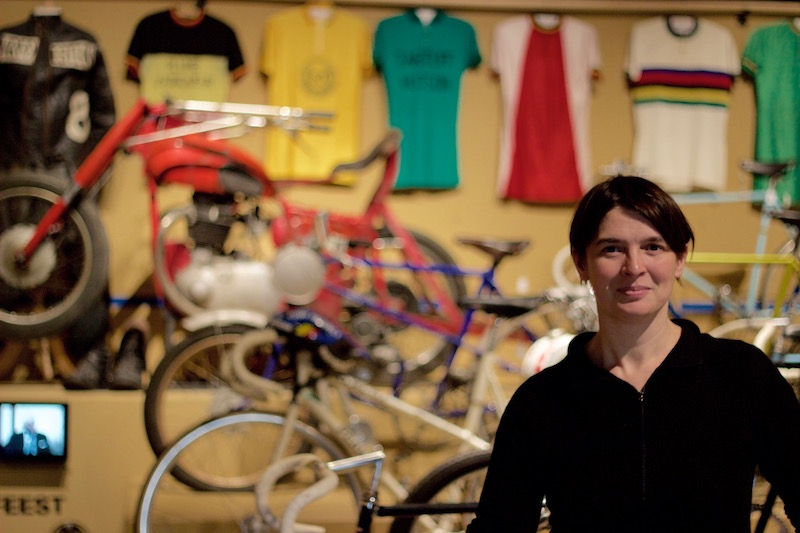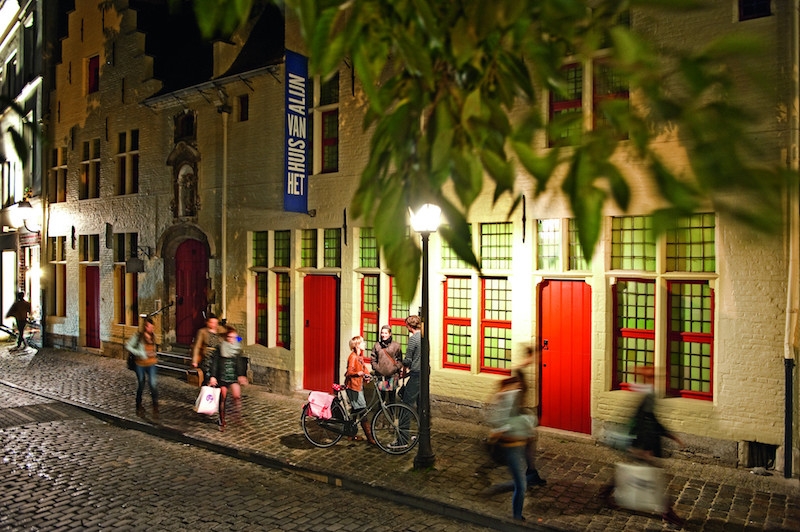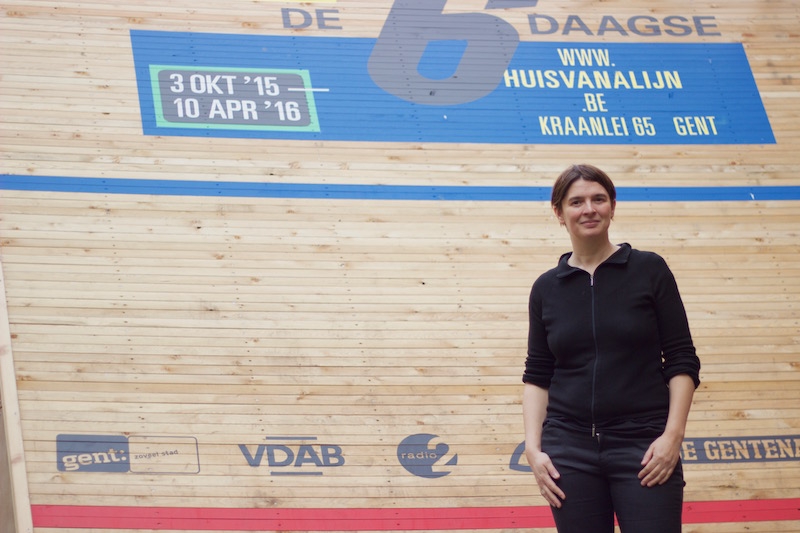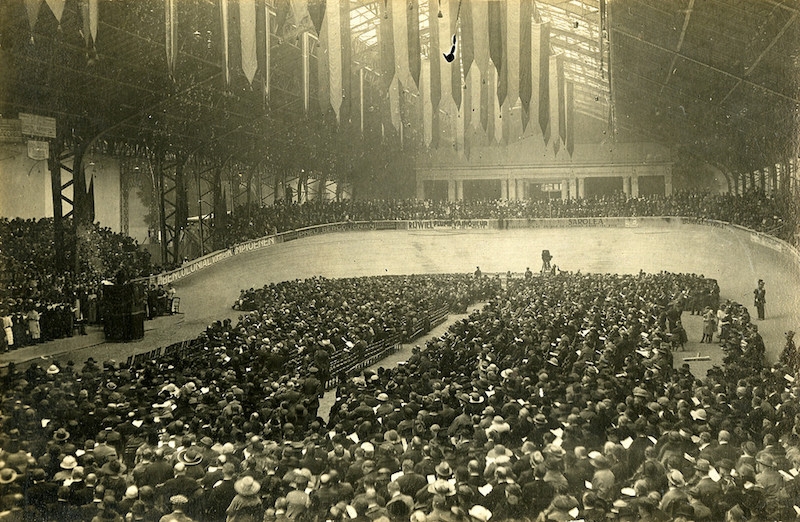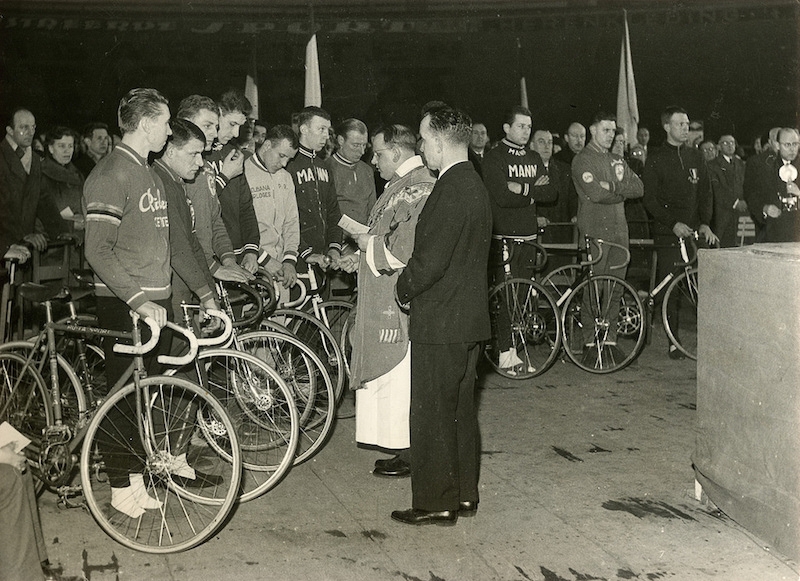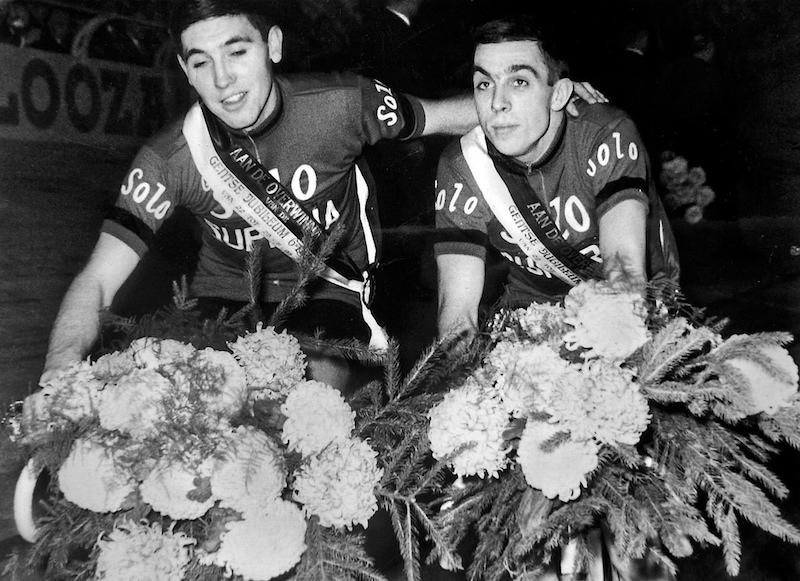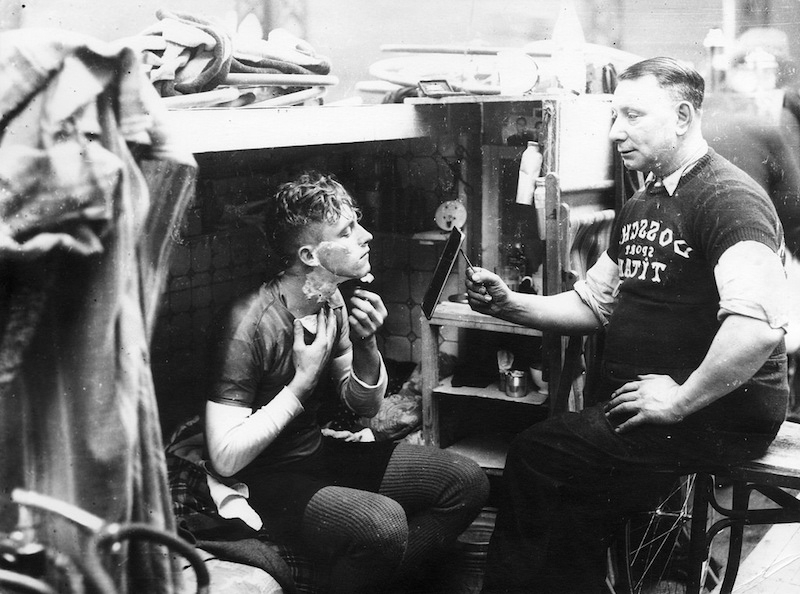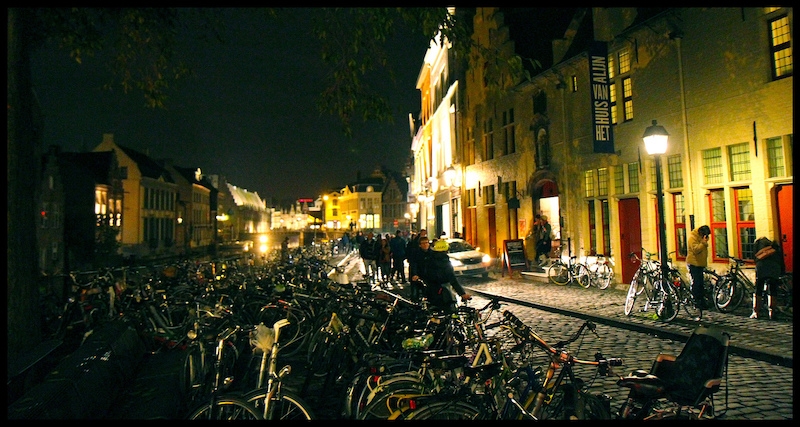The beautiful interior courtyard of Het Huis Van Alijn – a museum occupying a unique location in the historical centre of Ghent – will be the venue on Friday 5 February 2016 for a celebration of the second anniversary of Belgian Smaak: #SMAAKDOWN16.
Not only will attendees to the event enjoy 3 homemade Belgian chocolates and 9 special Belgian beers (2 of which are being brewed especially for the event), but the ticket price includes a self-guided tour of the museum upon entry so guests can see both the existing museum exhibits (about the evolution of everyday life) and an exciting new temporary exhibition about the famous ‘Six Days’ cycling race in Ghent, the ‘Zesdaagse’.
Tickets for #SMAAKDOWN16 are on sale now.
HET HUIS VAN ALIJN
“We’re very proud of all of our exhibitions and the Six Days exhibition is no different,” says Els Veraverbeke, Curator at Het Huis Van Alijn and the person responsible for the new exhibition. “The Six Days of Ghent is an iconic Belgian track cycling event. Every year, more than 40,000 supporters descend upon the historic track in Ghent’s Kuipke.”
It’s very appropriate that #SMAAKDOWN16 – effectively a small beer and chocolate festival – is taking place in the same space as the ‘Six Days’ exhibition. Cycling is perhaps the only other thing that could be more ‘Belgian’ than beer and chocolate.
“This year it’s the 75th edition of the ‘Six Days of Ghent’ and the 50th anniversary of the new Kuipke velodrome,” says Els. “It’s the perfect moment to cast a spotlight on the rich traditions, experiences and heritage of the Belgian ‘Six Day’ races and on track cycling in general.”
There are a range of unique exhibits: cycling jerseys from various years including that of Daniël Goens; a 1961 chrome track bicycle from the private collection of Pierre Simoens; the Golden Olympic medal won by ‘track emperor’ Patrick Sercu in the Olympic 1km track time trial at the Tokyo Summer Olympics in 1964; and a plethora of impressive photos and original programmes, many taken from the private collection of Eddy Verbust.
“We even have a replica of a bend from Ghent’s Kuipke velodrome,” says Els. It’s made by the Wood & Construction Team of the VDAB Wondelgem educational centre, together with their students.”
EMBRACING DANGER
The replica shows how dangerous this event is. The Kuipke is a short, steep and fast track. The bikes used in track cycling are fixed-gear and without brakes. It’s ideal for achieving high speeds on tracks with a gradient, but adds a certain level of risk.
This level of risk has been heightened by the inclusion of competitions during the ‘Six Day’ with motorised pacers, including a stayer (a heavy motorcycle) or a Derny (a motorised bicycle). They serve to increase the noise, speed and spectacle of the races. “With the motorised pacers, cyclists can get up to speeds of 100kms per hour,” says Els. “And that’s with no brakes.”
The track has been the backdrop for not only heroic victories, but also tragic accidents. During the fifth day’s racing at the 2006 event, Isaac Gálvez of Spain rode into the barrier edging the outside of the track and died on his way to hospital.
SIX DAYS OF SPECTACLE
The danger was one part of the spectacle. “Musical performances, circus acts and children’s afternoons have all been part of the entertainment during the ‘Six Day’ races,” says Els. “There was even a visit from the local church representatives so that they could bless the bicycles.”
The balance between visual spectacle and sporting competition is also explored in the exhibition. “There were a lot of ‘Six Days’ races in Belgium,” says Els. “But Ghent is the only one left. I think it’s because they really focused on the sporting side. Other ‘Six Days’ races focused more on the entertainment and show, like Brussels. Maybe that’s why Ghent was always able to attract the top cycling talent. Now, it’s more difficult with professional cycling contracts, but still to this day, cyclists really want to come to Ghent.”
There’s been no shortage of famous riders at this event. The darlings of Belgian cycling, Patrick Sercu and Eddy Merckx, won the Ghent ‘Six Days’ in 1965. There’s been an ongoing relationship between the Kuipke and Australian cyclists. Those that have stuck around – Danny Clark, Graeme Gilmore and Gary Wiggins – have gone on to be local heroes.
Matthew Gilmore – son of Graeme – was born in Ghent and raced as a Belgian between 1998 and the end of his career. Bradley Wiggins – son of Gary – was also born in Ghent. “Bradley Wiggins first became familiar with track cycling as a child in the Kuipke,” says Els. “Among his many accolades is the winning of the ‘Six Days of Ghent’ in 2003.”
EVERYDAY LIFE
“We’re a museum about everyday life, so our exhibition showcases not just the sporting history of the event, but the everyday life surrounding the race,” says Els. “The common thread of this exhibition is the stories of the cyclists, their entourage and their many fans and supporters.”
The exhibition at Het Huis Van Alijn includes a small bunk bed made up to show how the cyclists would have lived during the race. “Today the cyclists stay in hotels, but during the ‘Six Days’ before, they would have lived in quarters built on the inside of the track where everyone could see them,” says Els. “They had to create their own home for six days during the race, and we have some really fascinating exhibits showing how they did that.”
Footage from VRT and the national archives plays in one of the exhibition spaces, a converted chapel inside the museum. One old film in particular shows the revelry attached to the Ghent ‘Six Days’ of 1965. “If you look at this video you can really see the atmosphere and how it reached into everyday life for people,” says Els. “There was a lot of music and a lot of drinking beer. It’s a very appropriate exhibition at this venue for a Belgian beer and chocolate event.”
VENUE FOR #SMAAKDOWN16
Tickets are currently on sale for #SMAAKDOWN16.
You can buy your ticket here:


